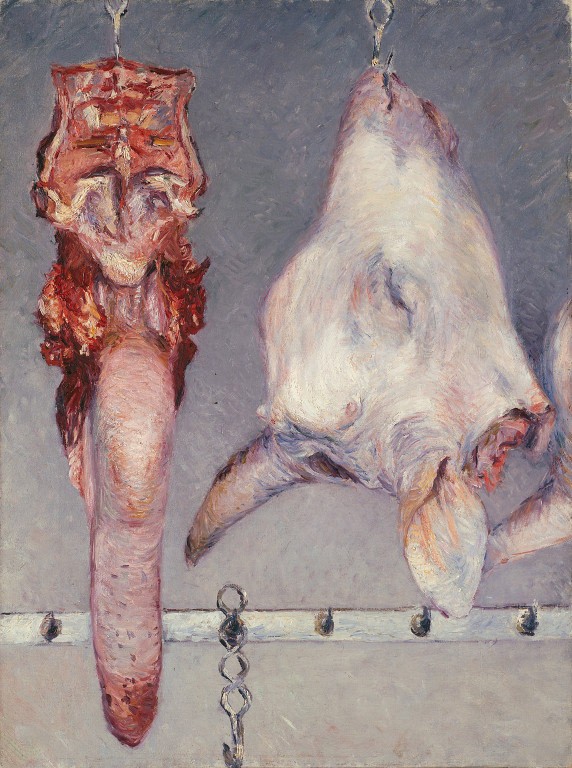I’ve found myself considering the question of desire—not only in the famous views of The Pont de l’Europe (with all their attendant questions about who’s looking where and why) or the nudes (the bather, the model, the sinewy floor scrapers), but even, or perhaps especially, in the glistening, high-impressionist still lifes. This genre’s traditional setting is, of course, domestic—either the kitchen table or the dining table—but the metal hooks from which Caillebotte’s pheasants dangle, the paper wrappings of his hothouse fruits, signal a change of venue from home to marketplace, from a realm of possession and satiety to one of display and desire.
However ostensibly repellant a calf’s head or the ragged, phallic tongue of an ox, his portrayal of them at once records and elicits desire. Those licks and strokes of lilac paint are loving and in themselves undeniably beautiful. Is it not significant that, having grown up with home delivery of produce from the family farm, Caillebotte set out for Les Halles in search of still-life subjects? As others have pointed out, such pictures must have been costly to “pose.” Think of all the lobsters and oranges, chickens and cakes he must have bought!
Before they were painted, these things were displayed and collected. And so I’ve begun to wonder whether the link between Caillebotte’s art making and collecting might not lie in a coming to terms with his own desire—to possess, copy, consume. The contented late regattas and gardens in bloom can grow tedious; the best of these suburban scenes may be the crooked Bridge at Argenteuil over the Seine, so anxious to achieve the effect of a Monet, so naked in its desire.
Emily Beeny
Associate Curator, Norton Simon Museum

